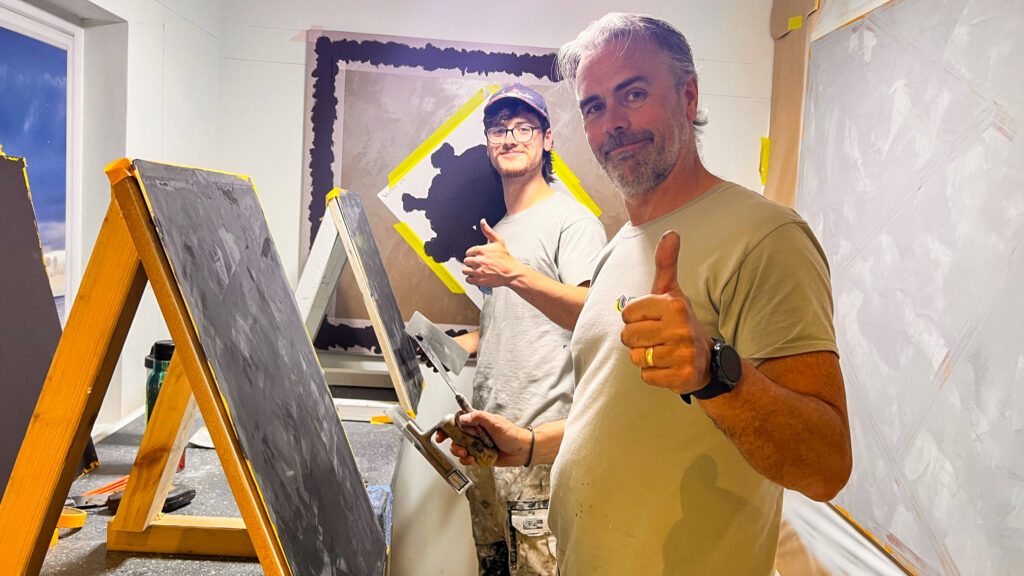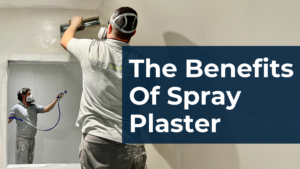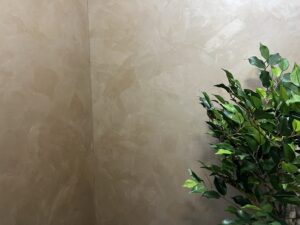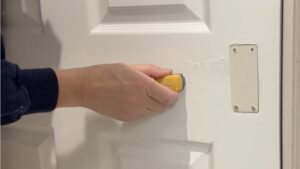What does CITB stand for?
CITB stands for Construction Industry Training Board. If you look on their website www.citb.co.uk, you will be able to check them out. They are an organisation that supports the skills needs of the construction sector. They have been around for many years, and they are involved in supporting employers with apprenticeship training as well as supporting full cost courses.
The construction industry is massive (over £100 billion a year) and is the engine for the UK economy. However, unlike other sectors, it is made up and many very small businesses. 80% of the construction industry are small companies, and the remaining 20% are massive multi-million-pound businesses. Large businesses train staff but cannot train the whole industry independently, so they rely on smaller businesses taking on apprentices to keep the workforce skilled.
To fund this, a levy is charged on all businesses with a wage bill higher than £120,000 (currently), so if you are a small business and your wage bill is below this, you do not pay anything. If your wage bill is above this amount, then you pay just 0.0175% on any amount about that.
The system is designed so that the big companies help the small companies train people.
Check out the website for the most recent information.
How can the funding be used?
The CITB fund can be used for a wide range of training. They have a list of approved courses for every trade, including Painting and decorating, and the list of courses available are listed below in this blog.
Typically, a decorating company will want to train themselves or their staff up in a chosen skill—for example, airless spraying. The CITB has an airless spraying “standard, ” and training organisations must be approved to deliver that course. A training organisation needs to be an “ATO” or approved training organisation.
You apply for the courses that you are interested in, and the CITB will transfer the funds for the courses into your bank account. This can be anything up to £5000. This may sound a lot, but if you have 3 or 4 employees and need them all training, you can easily spend this amount.
You now have the funds to pay for the courses. You have 12 months to complete all the courses that you have selected.
As well as trade-specific courses, there are also courses such as iPAF for use with scissor lifts and cherry pickers. Also, you can claim for PASMA, which covers mobile towers and also site management safety training (SMSTS). Many of these qualifications need to be renewed and are essential for a construction business.
Types of funding/levy etc
There are a number of funding options that are available to you from the CITB. The simplest is the automatic grant (short course grant) payment that you get if you enrol on a short course without applying for the skills and training fund. If you are CITB registered, you will get a grant payment of £30, which is tier 1, usually one-day courses, once you have done the course. Tier 2 grant payment is £70, and finally, tier 3 funding is £120. These payments are triggered when the training provider informs the CITB that you have completed the course.
The next type of funding source is the “Skills and training fund”, which is for companies to offer training to their staff. There are a number of grants available. For companies with less than 50 staff, the amount available is £5000 per year.
If you have between 50 and 75, then the amount is increased to £7500, and finally for companies with more than 75 and less than 100 can apply for £10,000.
Most small decorating companies have less than 50 employees, so this is the most common grant that is applied for.
The next type of funding is the apprenticeship grant. This is designed to help cover some costs incurred when taking on an apprentice. The amounts are subject to change as well. Currently, there is a government incentive of £3,000 if you take on a new apprentice.
Once the apprentice starts, they will be with you for three years, and you will get an attendance grant of £2500 per year. Once your apprentice achieves their qualifications, you will get an achievement grant of £3500.
This gives you a feel for the apprentice funding, if you are serious about taking on an apprentice, then you should speak to your CITB advisor, and they will give you up to date information.
What can you get funding for?
Funding is to be used for training, and a wide range of training is available. You can train yourself, your staff or your subcontractors. This means that the funding is very flexible. The funding is awarded for the year. If you apply for it in May, you have until the following May to complete the training you have selected.
Once you have completed all the training, you can apply for more funding in the following May if you need it. Your funding year will always be from when you first applied.
Apprenticeship funding is obviously for your apprentices; many companies have more than one apprentice and, therefore, will claim more than one set of funding.
You can apply for funding for “Leadership and Management”, usually for the business owner or the managers of the business and takes the form of courses and mentorship to help you develop your business to the next level if that is what you would like to do.
Download Now – Find Out How To Access Funding For Training – Get £5,000 Free Funding [FREE DOWNLOAD]
Types of courses available.
There are a number of CITB courses available for decorators, and these are as follows:
Painting using airless spray equipment:
If you are a decorator who is thinking about introducing spraying into your business, then this course is ideal for you. It is designed for people with no knowledge at all but will take you to a level where you can spray commercially.
The course looks at the spray equipment, the pumps, the guns and the tips. It looks at all the accessories available and also the health and safety implications. There is some classroom time, but most of the course is in the workshop, where you will be getting hands-on spraying.
Over the 2 days, you will spray various surfaces with various paints, including ceiling and walls, skirtings, architraves, and doors. You will also spray spindles and a handrail to get a feel for spraying a staircase.
There is also a troubleshooting aspect to the course where common problems are discussed, and you will be shown the solution. This will make your entry into spraying pain-free. Finally, we offer ongoing support in the form of a private Facebook group that will introduce you to an extensive network of experienced sprayers and act as a source of continuing knowledge.
The course leads to a City and Guilds assured certificate.
Learn more about the “Painting using airless spray equipment” course here.
Painting using HVLP equipment:
Many decorators prefer to use HVLP spraying equipment. This portable, high-volume, low-pressure system is entirely different from airless spraying. There are a few advantages and disadvantages to HVLP spraying, including using smaller quantities of paint and ease of cleanout.
The course looks at HVLP turbine systems and looks at the conventional compressor and spray gun systems that many uPVC companies are using.
The course runs over 2 days and starts with a short classroom session that looks at the equipment and how it works. Then you will go into the workshop and learn how to set up and spray using an HVLP turbine. You will spray several surfaces in the afternoon to get to grips with the system.
On day 2, you will be introduced to a compressor and spray gun set up, and you will learn how these differ from HVLP. You will spray a few different paints through the spray gun, including metallics and lacquers. Finally, you will get to try all the systems on the final afternoon of the course and spray extra surfaces such as stair spindles.
The course leads to a City and Guilds assured certificate.
Learn more about the “Painting using HVLP equipment” course here.
Fitted furniture renovation:
There is a growth area of work for decorators, and that is spraying kitchens and fitted furniture. This can play very well, and if you are good at it can lead to a steady flow of satisfying work. This course is run over two days and is designed to get you up to speed with the techniques needed to spray a kitchen or fitted furniture.
This course is designed for people with no previous knowledge of spraying, and the first day will introduce you to the sprayer and the setup and accessories. You will also prepare the unit to be sprayed by removing the doors and preparing it. You will apply primer coats to get you up to speed with the spraying so that you will be ready for the finish coats on day 2.
Day 2 is an opportunity to set up the equipment in a finish paint and paint the doors and carcasses. On the second day, we will explore different products and look at the common pitfalls when spraying furniture, including masking, avoiding runs and spraying in the correct sequence.
The course leads to a City and Guilds assured certificate.
Learn more about the “Fitted furniture renovation” course here.
Airless spray plaster:
It is worth checking out if you are a decorator and have never heard of airless spray plaster. This is a process where you can spray a product called spray plaster onto a plasterboard surface to achieve a finish far superior to traditional plaster, with the added benefit of it being easy to apply.
The airless spray plaster course assumes no knowledge of spray plaster, but it would be helpful if you have used an airless sprayer before. This is a 2-day course that will take you through the entire process of setting up the sprayer, preparing the areas to be plastered and applying the product. You will use a range of tools for the application of the plaster, and on the second day, you will be able to apply a second coat and prepare areas for the application of paint.
This course is more than just a product demonstration, and you will be given knowledge of different products and systems so that you can move forward and integrate spray plaster into your business.
The course leads to a City and Guilds assured certificate.
Learn more about the “Airless spray plaster” course here.
Estimating for Painting and decorating:
Most decorating businesses are either a one-man-band or a very small 3 or 4 man team. This makes up over 80% of the industry. Many decorators have served their time with a company before setting up on their own and have little or no knowledge of estimating, pricing or running a business. In many cases, decorators are unaware of the mistakes that they are making and wonder why they continue to struggle to make a decent profit.
This course has been designed for the small decorating business that wants to get it right. We look at several pricing strategies and how prices are built up. You will be able to estimate materials accurately and also be able to price from plans if you need to. This course has something for everyone. If you are working on your own and want to ensure that you are pricing correctly, this course will give you confidence.
If you are a larger company that has been asked to price from plans, but you are afraid to or don’t know how this course will speed you up to speed.
Although this is a 2-day classroom-based course, there are several practical exercises that get you away from the desk to measure up and price real situations. Everything is explained, and no prior knowledge is needed. The course is very hands-on driven, and although there is some calculator work, it is all explained step by step.
Learn more about the “Estimating for Painting and decorating” course here.
Hanging mural wallcoverings:
One fast-moving trend in decorating is murals. These are feature wall items that can either be an image of a landscape or sports car, or it can be a none repeating pattern that fills the whole wall. Murals can offer a good source of income for the decorator because commercial work such as hotels will pay a premium for a bespoke mural installed in their reception area.
There are several murals on the market, and many decorators are not aware of the better types of murals and have only ever hung the cheap, nightmare to hang ones that can be bought online.
This is a one day course that will take you through the process of hanging several murals. You will start with the cheap multiplate, overlap and match murals that are commonly available. Then you will move on to a more professional multi-drop with a splice type mural. These are more durable, and the seams are less easy to detect.
Finally, you will install a one-piece mural. These can be supplied with an image and any size without any seams. These are fireproof and very durable. Once you have done the course, you will feel confident enough to offer this as a service for your decorating business.
The course leads to a City and Guilds assured certificate.
Learn more about the “Hanging mural wallcoverings” course here.
Wallpapering has been in the wilderness for many years. In the 1980s (yes, we know that’s a long time ago), people would get their whole house wallpapered, and decorators were very confident hanging wallpaper. After many years of no one getting any wallpapering, it is back with a vengeance.
These days though, it’s £150 a roll!
If you have never wallpapered, but you know that it’s a skill you need to offer, then the paperhanging introduction is ideal. The course is over 2 days and assumes no knowledge at all. You will have a range of wallpapers over a range of surfaces. The course is mostly practical, and you will work on your own areas. Group sizes are small, typically 4 in a group, so this will give you a lot of time with the tutor if needed.
Learn more about the “Paperhanging introduction” course here.
Paperhanging intermediate:
This course is designed for people who have either done some wallpapering before or have completed the introductory course, and they want to do more. The intermediate course is all practical, and you will wallpaper a range of surfaces over the two days.
These surfaces include a fireplace wall, a window reveal and a ceiling. You will use a range of wallpapers and a range of pattern types.
By the end of the paperhanging intermediate, you will wallpaper most situations.
Learn more about the “Paperhanging intermediate” course here.
Hanging wallcoverings to complex surfaces:
This course is for the experienced paperhanger who wants to know how to wallpaper the most challenging areas. This is a two-day course which will involve wallpapering an archway, a column and large span ceilings. You will use a range of patterns, and you will be challenged to produce a professional wallpaper installation in the most challenging areas.
Hanging specialist wallcoverings:
There are a number of specialist wallcoverings on the market, and these require a number of skills to hang them correctly. For this course, you will need to be confident in wallpapering or have completed the intermediate wallpapering course. The two-day course will look at a few specialist wallcoverings, including Lincrusta and flock wallpaper. These are expensive papers, and you will hang them on your own wall areas.
Learn more about the “Hanging specialist wallcoverings” course here.
Hanging wide width vinyl:
The final wallpapering course in the series is the application of wide vinyl. This is not a beginner’s course, and you will need some experience of paperhanging before doing this course, even if it is the paperhanging introduction course.
Wide width vinyl is used extensively in offices and commercial properties. It is very durable, and the seams are virtually invisible. The vinyl’s come in a wide width, typically 1.3 metres. They paste the wall coverings that need to be sliced on every seam. There are several considerations when installing wide width vinyl.
This is a 2-day course that goes through the process of installing wide vinyl and looks at the considerations and pitfalls of hanging this type of wallcovering.






